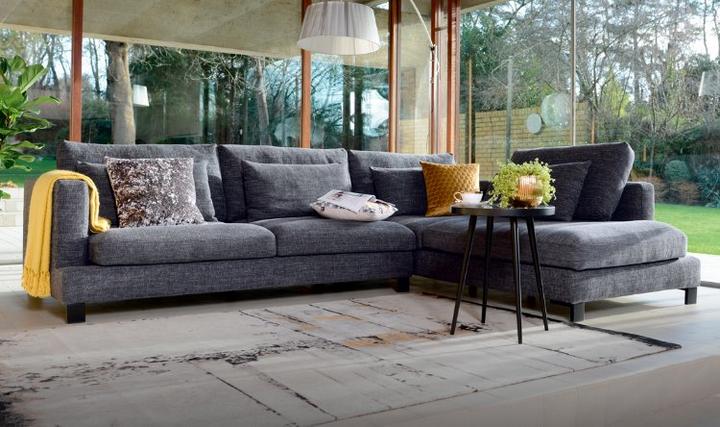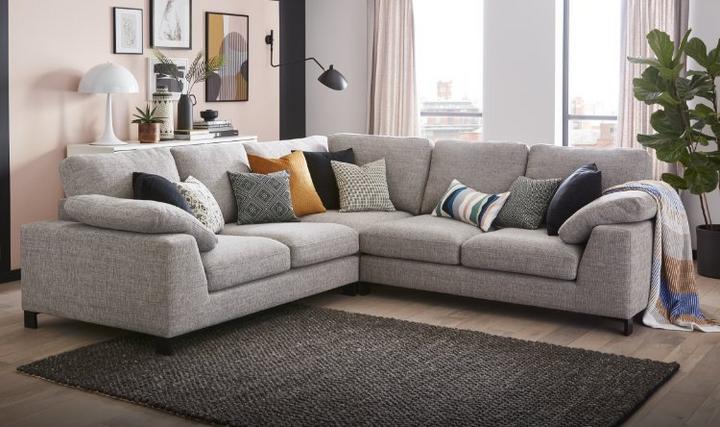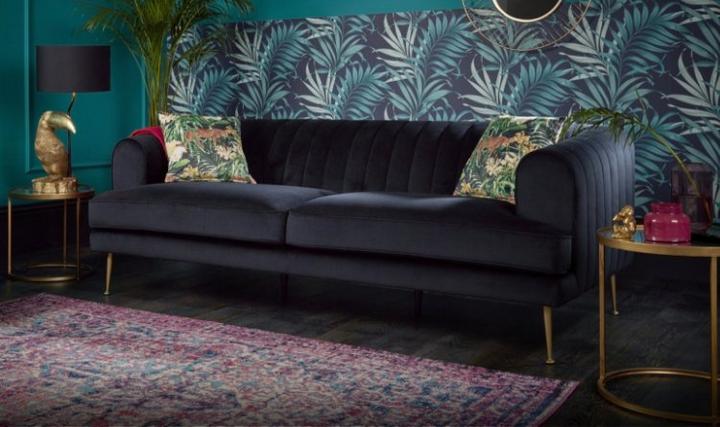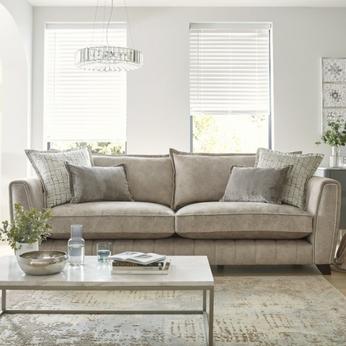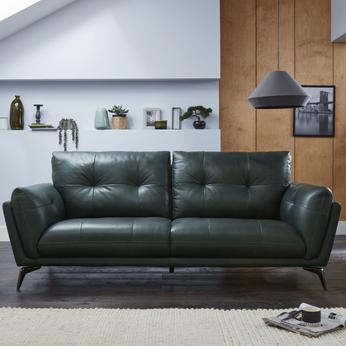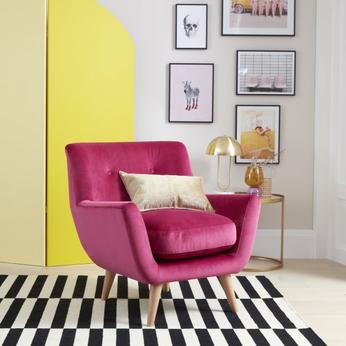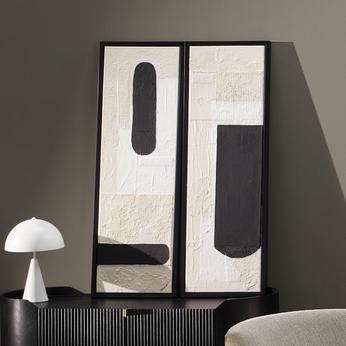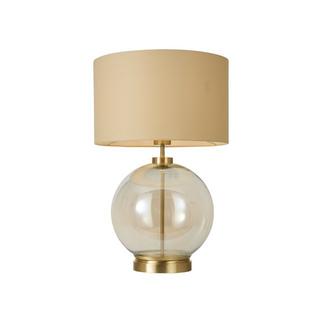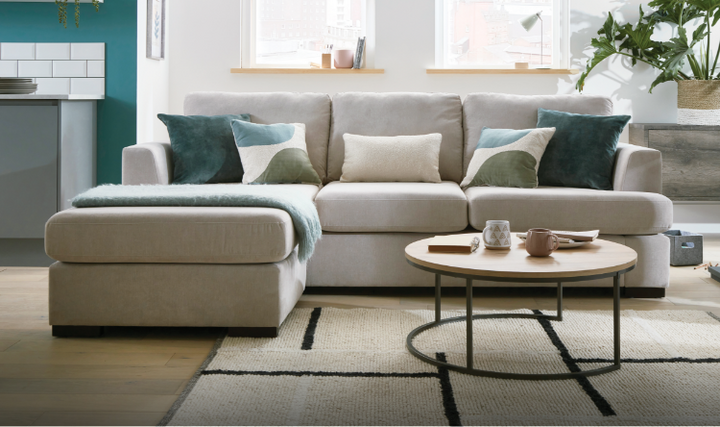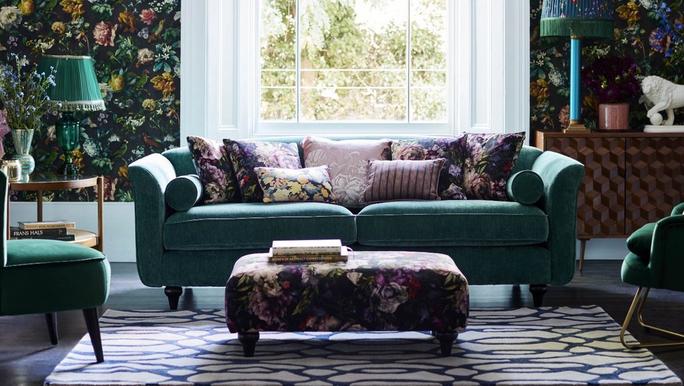
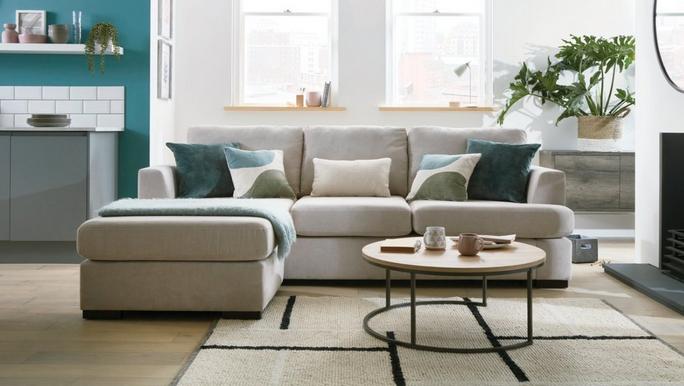
How to Choose a Colour Scheme For Your Living Room
Your living room is more than just a space to relax; it’s a canvas where you can express your personal style and establish a harmonious atmosphere.
And that’s where your living room’s colour scheme comes into play! From soothing neutral shades to joyful vibrant hues, the best colours for your living room create a space that reflects your unique taste and personality. But how do you know which shades best suit your décor? And how do you create co-ordinated colour combinations for your living room?
Continue reading, below, to become a bona-fide living room colour expert.
1. Consider the lighting
While the sun may not be the first thing that comes to mind when thinking about living room colour schemes, natural light has a huge impact on how we perceive a room.
For example, a sun-soaked space will feel larger and more open than a dimly-lit room, and it would also better inject vibrancy into your living room’s colour palette.
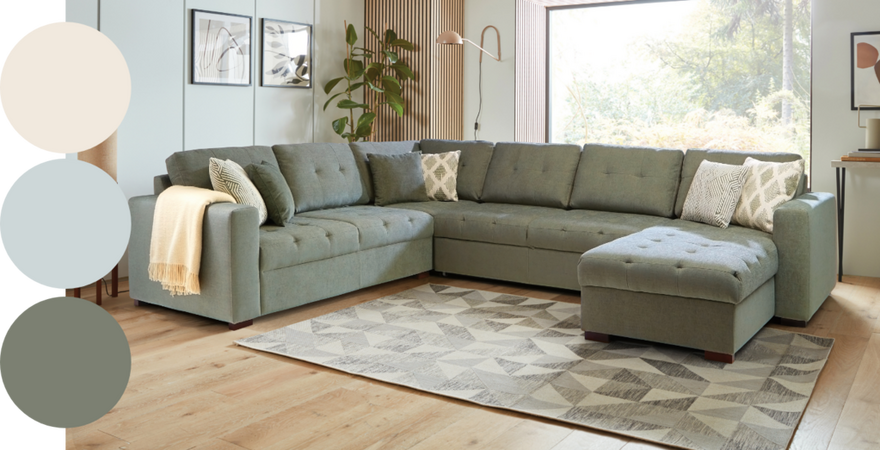
If you want to take full advantage of the rays shining through the window, then bright tones and light neutrals are your best bet. We’re talking about the likes of soft whites, creams, pastel blues, and sage greens that help to create a fresh and airy atmosphere.
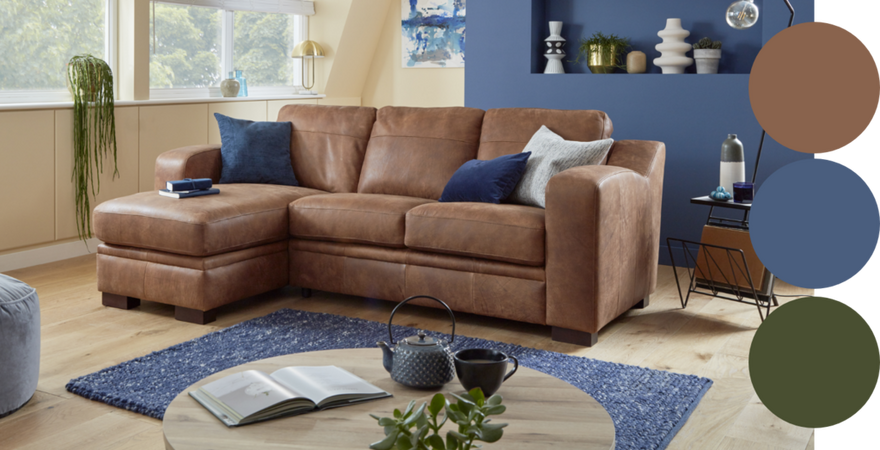
A supremely sunny space also gives you the licence to go a little darker with your lounge colour scheme, if you prefer those deeper shades. Dark, earthy shades – such as burgundy, olive green, and deep brown – can be an elegant and refined choice, but unfortunately it only really works in well-lit rooms. Otherwise, it can make your living room feel smaller than it actually is.
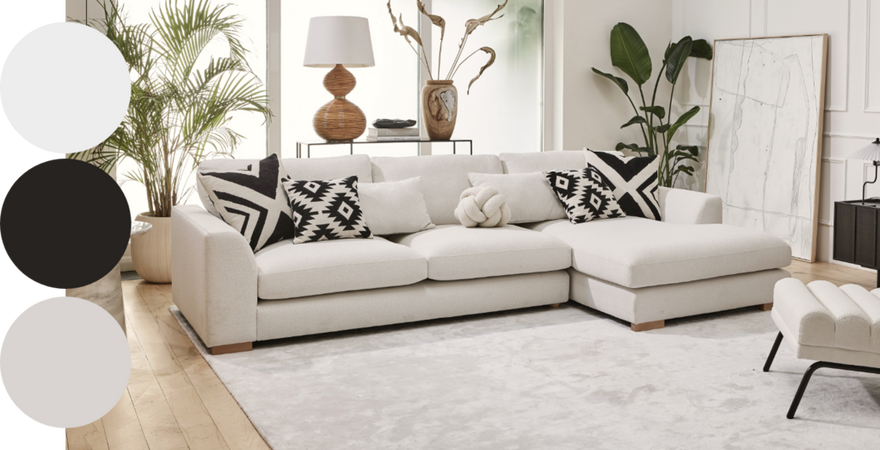
If you do have a darker room, then whites and light greys are the best colours for your living room, reflecting even the tiniest sliver of natural light that shines through your windows.
2. Measure up your living room
Regardless of the actual dimensions, the colour palette for your living room can make the square footage feel much smaller or bigger than you’d expect.
The concept is very similar to how natural light impacts your perception of a room, with light and bright shades giving a greater sense of space, while darker, deeper hues can make your living room feel smaller by comparison.
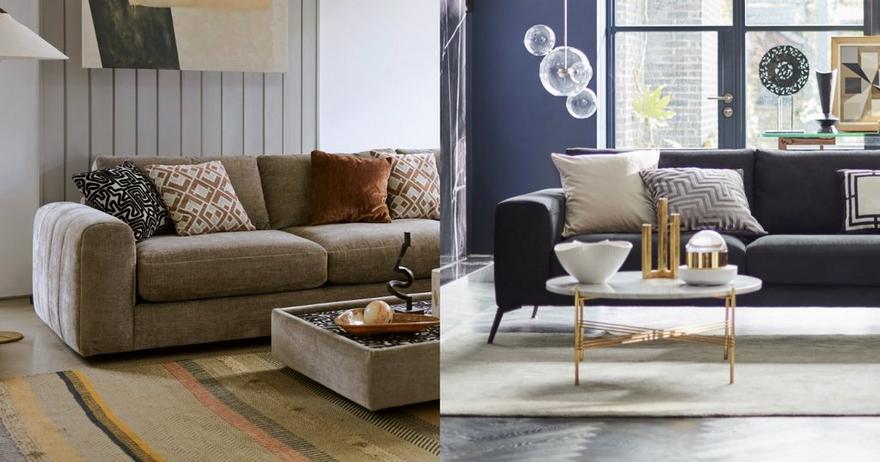
Those with a larger space to play with, however, have a little more room to experiment with darker, more varied pigments. For a modern monochromatic motif, opt for a black and white wall colour combination for your living room – or you can look to earthy browns, rich reds, and golden yellows, if you want warm living room colours.
3. Match the colour of your existing furniture
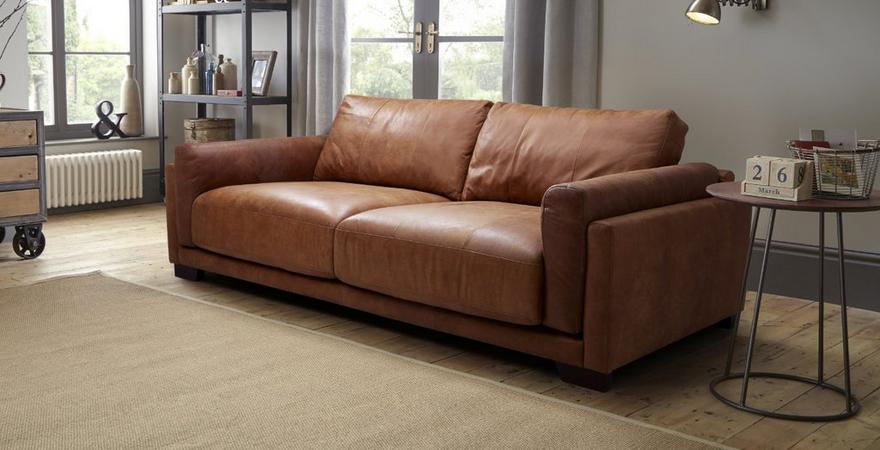
For example, if you already have a brown leather sofa, then use that colour as the foundation for the rest of your living room. Match the brown shades with beige colours for your living room wall, continue the sophisticated style with a chestnut footstool, or contrast with a cool blue accent chair to help both pieces of furniture stand out.
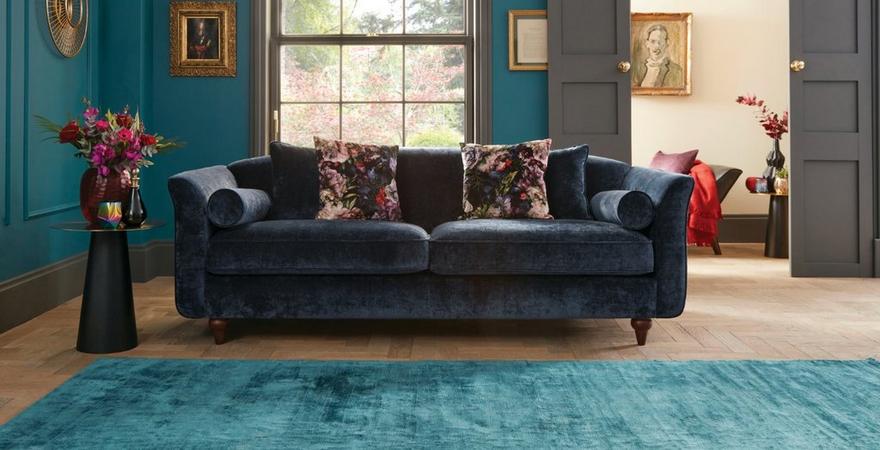
Should your living room colour ideas include a brand new sofa too, you can instead look to build upon the other little colour details in your space. Maybe you want to match the colour of your curtains? Or perhaps you’d prefer to follow the hues of your artwork and wall murals? You could even use the shades of the collection on your bookshelf to kickstart your living room colour scheme ideas. Your choice of living room colour combinations is up to you!
4. Let ambience lead the way
Of course, picking pigments according to the existing set-up of your lounge is all well and good, but you still want to ensure you’re creating an ambience you want to spend time in.
And, perhaps aside from your lamps and lighting fixtures, living room colour scheme ideas are the most direct way to influence the atmosphere and ambience of your décor. The question is, what kind of vibe are you thinking for your lounge?
If you want to create a cosy lounge, complete with fluffy rugs, thick throw blankets, and plump scatter cushions, then opt for warm living room colours, such as deep reds, burnt oranges, and terracotta tones. For those smaller rooms, we’d recommend using these richer pops of colour more sparingly, paired with a neutral living room wall colour combination.
Or perhaps you’d like a more energetic atmosphere that lends itself to hosting guests and parties? Electric blues, sunny yellows, and fiery reds are dynamic accents for any type of space, working particularly well with neutral shades as a modern two colour combination for your living room. Experiment with different living room colour combinations to find the shades and hues that best suit your intended ambience.
5. Follow the 60-30-10 rule
Worried about overwhelming your décor with too much of one colour and ruining the look of your lounge? The 60-30-10 rule ensures the colour scheme for your living room is always well-balance and harmonious.
Essentially, this rule breaks your lounge colour scheme into three percentages – 60%, 30%, and 10%. This means that 60% of your living room colours should be made up of your dominant or primary pigment, 30% is for your secondary colour, and the final 10% is for your accent shade.
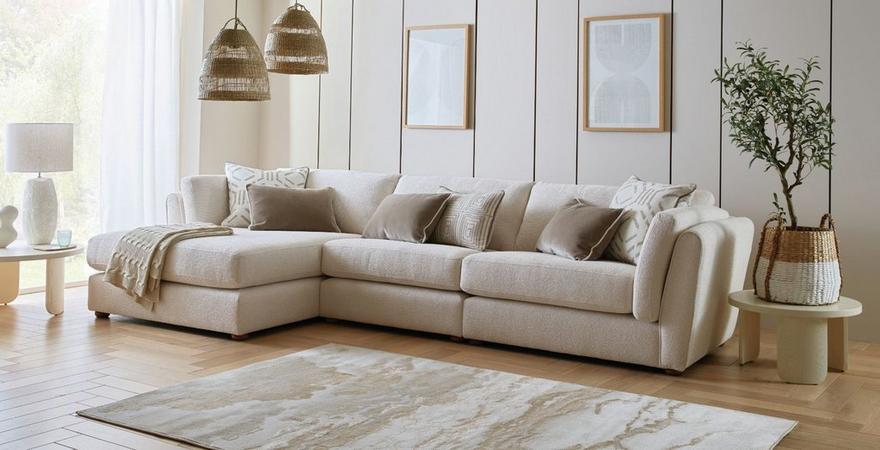
As you’d expect, the dominant living room colour is the one that will inform the rest of your décor and majorly influence the ambience of the room, so pick a pigment you are 100% sure about. This is likely what you’ll choose as the colour for your living room wall and sofa, creating a strong foundation for the rest of the room.
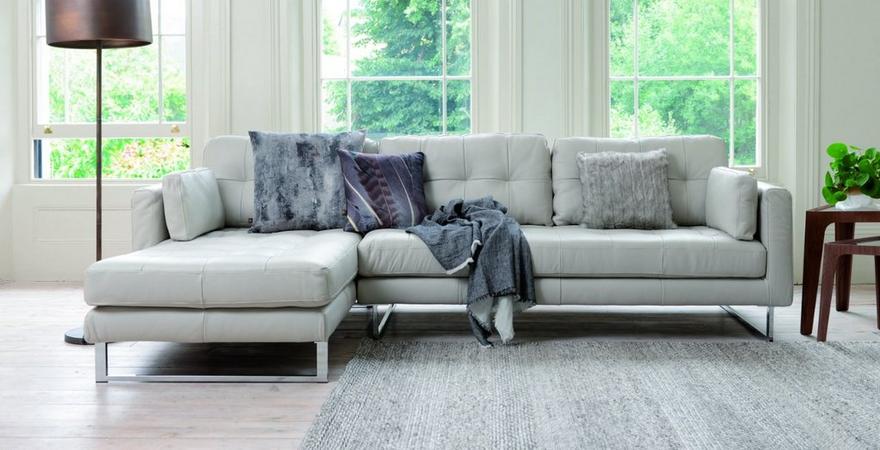
The secondary living room colour that takes up the 30% should be complementary to your dominant choice, continuing the colour scheme with similar shades and pigments. For example, if you’ve gone for a neutral colour for your living room wall, then soft whites and light greys are a great pick for your 30%.
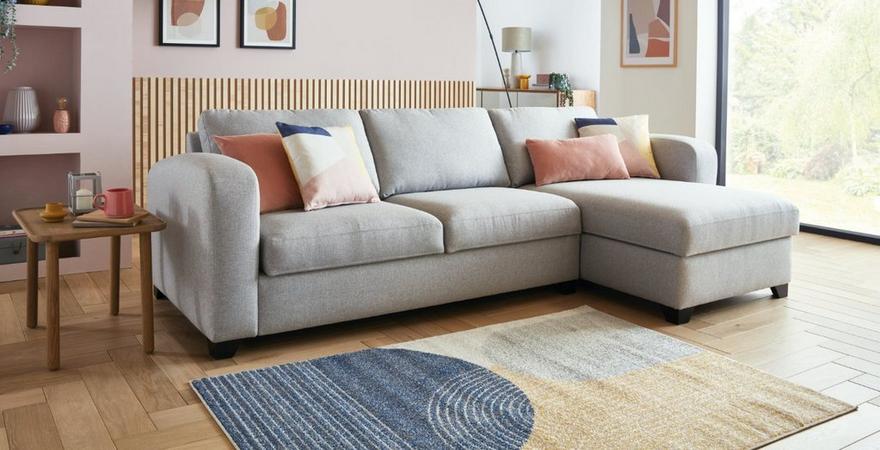
Now, the 10% accent is where you can start to contrast and add that vibrant pop of colour to your décor. Even with such a small share of your living room colour scheme, a punchy pigment can really infuse your décor with energy and personality! Don’t worry, you don’t need to be exact with your percentages here, just use the 60-30-10 rule to help guide you to the perfect balance.
Want to put your new-found expertise on picking living room colour schemes to the test? Explore our collections of fabric and leather sofas for the shades and hues that speak to you, and take a look at our home accessories range for those all-important accents.
